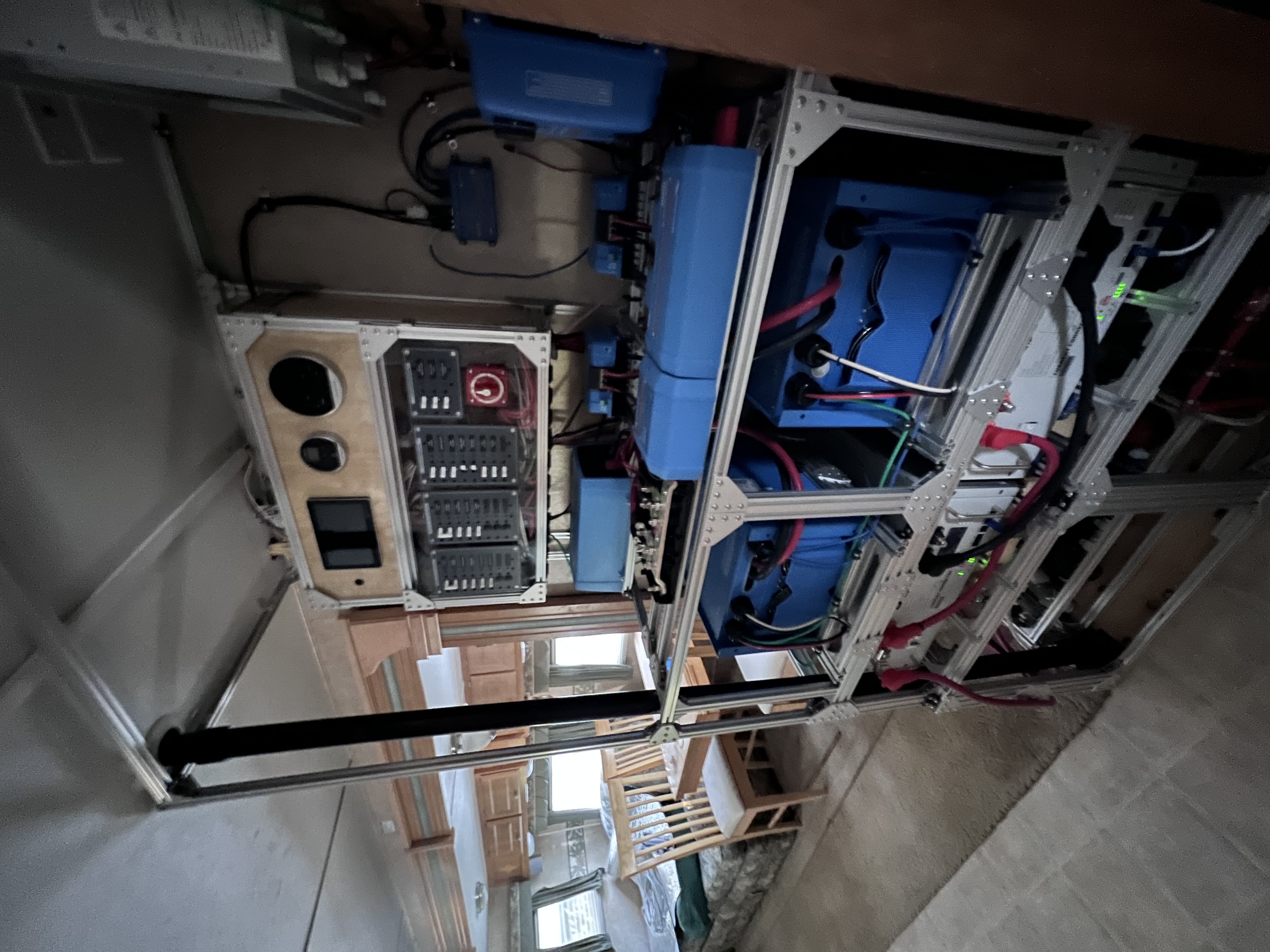May 25, 2023 update:
Thanks for the helpful advice, everyone. As an update, here's what I've learned, and I think we can consider this question closed:
1. Multiple inverters in parallel apparently put greater stress on battery pre-charge circuits than the same combined size as just one inverter (i.e., 2 x 5000KVa vs. 1 x 10000KVa).
2. It seems worth trying other battery brands, such as EG4, to see if they have better pre-charge circuits than the SOKs. Despite now having 4 x 100Ah 48v SOKs connected, I am still occasionally getting an alarm when trying to pre-charge two paralleled inverters. Importantly, SOK support hasn't been super helpful in the processes. They are unwilling to talk to me directly, don't have a developed community I can fall back on, provided what feels like cut-and-paste info to the distributor I work with, and showed little real interest, IMO, in if that reply actually worked and if the problem was addressed.
3. This Victron community has been very helpful. I appreciate the level of response, the thoughtful questions, and the helpful insight. Thank you all.
--------------------------------------------------------------------
Original post:
Context:
Last year I built a power station for our camp at Burning Man. At its core, it has two Quattro 5000VA inverter chargers wired in parallel with a large bank of SOK 48v 100Ah batteries recharged from some solar shade structures I built. The system worked fine at burning man and at the end of the season. The only change after that was to remove the batteries to protect against freezing. They are fully charged. See the system picture attached for context if helpful.
Problem:
Today, six months later, when powering up the system, each battery's BMS goes to alarm mode, which I'm assuming is because the inverter capacitors are drained.
What I've tried:
With no luck, I tried pre-charging them using a 50w 30 Ohm resistor between the negative battery terminal and the wire leading to the Lynx. After some research, I then decided to try a 200w 50 Ohm resistor setup. No luck. I waited until the voltage stabilized at ~52.4v on the MPPT display each time and then some, with no success. For this startup test, I only used two of the SOKs, but I imagine that would have no impact vs. using more.
A few pieces of additional perspective:
1. If I remove the power cables from the Lynx to the Inverters, the rest of the system powers up and works just fine.
2. I looked inside the Quattros and inside the Lnyx for possible shorts, but don't see any.
3. I removed the remote pass-throughs for the Phoenix, two 48-12v DC-DC converters and unplugged the Cerbo to minimize anything stealing the limited power from the Quattros. The MPPT is still plugged in (I'm using the display to monitor the system voltage), but at 20mA, that shouldn't have any impact. Nothing changed.
4. I tried only having one Quattro connected with no luck
5. Waiting longer for the inverters to pre-charge (I tried for up to a minute) seems to have no impact.
6. I've tried different resistors with no change in results, so I assume it isn't a b broken resistor issue.
Request:
Help. :) What am I doing wrong? Thanks!
